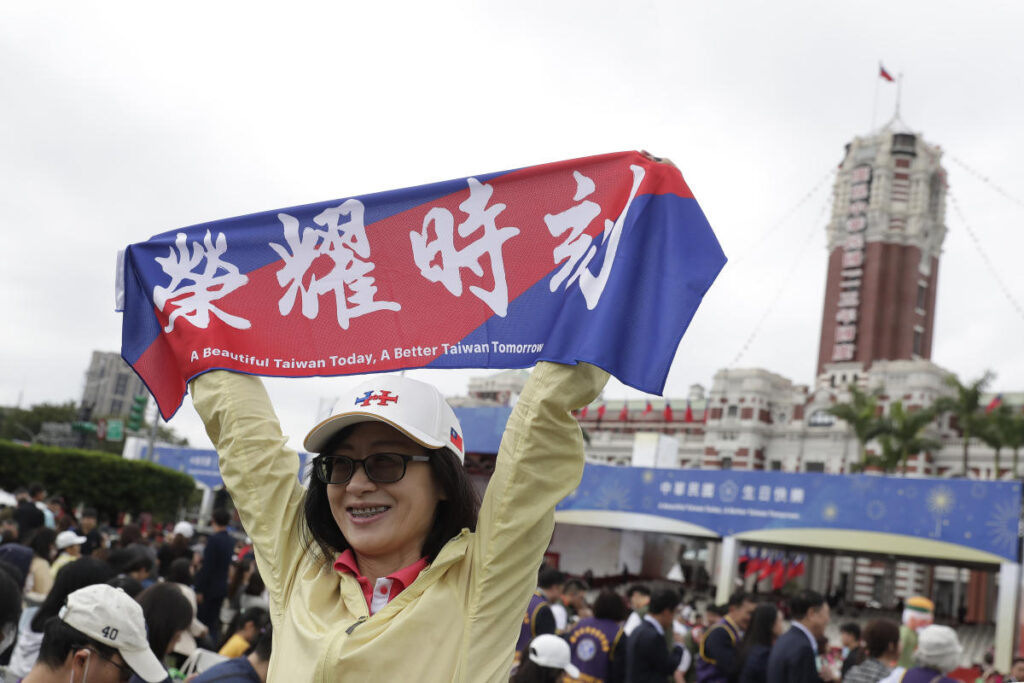Taiwan commemorated its National Day with a mix of pride and tension as it faces ongoing threats from China, which continues to assert its claim over the self-governing island. This year’s celebration marked the founding of the Republic of China (ROC), which originated with the overthrow of the Qing Dynasty in 1911. Following the Chinese Civil War in 1949, ROC government officials retreated to Taiwan, where they maintained their claim as the legitimate government of all of China. Over the decades, Taiwan has transitioned from martial law to a democratic system, reaffirming its national identity while still operating under the original constitution brought from China. The presence of the ROC flag symbolizes its historical roots, even as Taiwan continues to navigate complex relations with mainland China.
President Lai Ching-te, who assumed office in May, leads the Democratic Progressive Party (DPP), which firmly opposes Beijing’s assertion that Taiwan must recognize itself as part of China. In contrast, the Nationalist Party, which ruled before the DPP, supports a unification viewpoint, seeing both Taiwan and the mainland as one nation. Lai’s administration represents a continuation of the DPP’s stance throughout the past eight years, maintaining a firm position against China and advocating for Taiwan’s sovereignty. This political landscape fuels Taiwan’s apprehensions and shapes the context of its National Day celebrations.
The National Day festivities included a range of activities designed to showcase national pride, with speeches from President Lai and other high-ranking officials. However, this year’s events were notably subdued, with a focus on traditional displays such as performances by military bands and an honor guard in front of the Presidential Office Building in Taipei. Unlike previous years, there was an absence of heavy military hardware, signaling an attempt to present a more restrained image amid the increasing tensions. The program aimed to strike a balance between celebrating Taiwan’s identity and acknowledging the precarious geopolitical climate.
Amidst the national celebrations, China’s military conducted maneuvers that underscored the ongoing pressure it exerts on Taiwan. The People’s Liberation Army sent 15 aircraft across the median line of the Taiwan Strait, a significant act that prompted Taiwan to respond by scrambling jets and preparing its defense systems. This militaristic posturing serves as a reminder of the persistent threat that China poses to Taiwan, with the latter remaining on high alert to safeguard its sovereignty and territorial integrity. The recent show of force from China not only heightens regional tensions but also complicates Taiwan’s national narrative during a time of celebration.
Taiwan’s response to China’s threats is shaped by its historical experiences and the desire to maintain its democratic values. The transition from an authoritarian regime to a democracy in the late 20th century has fostered a strong sense of national identity among the people of Taiwan. Many view their democratic system as a defining characteristic that differentiates them from the authoritarian governance of mainland China. This perception is central to Taiwan’s political discourse, influencing public support for leaders like Lai who prioritize national sovereignty and democratic ideals.
Looking ahead, the situation between Taiwan and China remains delicate, as the former seeks to assert its identity while navigating increasingly complex international relations. China’s insistence on unifying Taiwan with the mainland continues to pose significant challenges for the island’s government and its citizens. As Taiwan strives to celebrate its National Day with pride, the backdrop of military intimidation serves as a poignant reminder of the ongoing struggle for recognition and autonomy. Taiwan’s commitment to its democratic principles and its resolve to maintain its separate identity will be tested in the coming years as it faces external pressures and seeks to define its place on the global stage.

